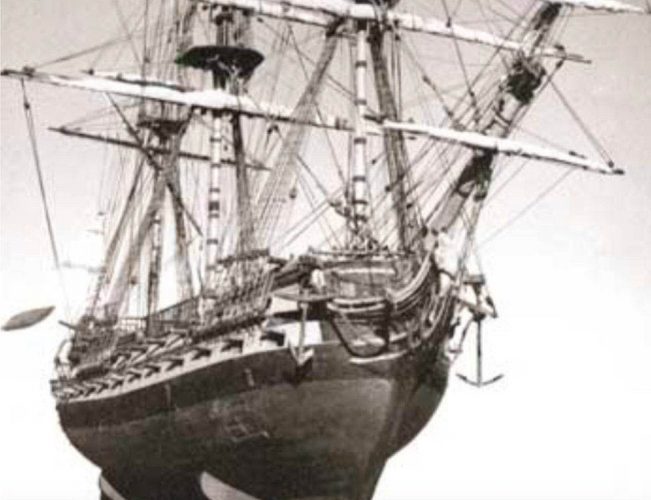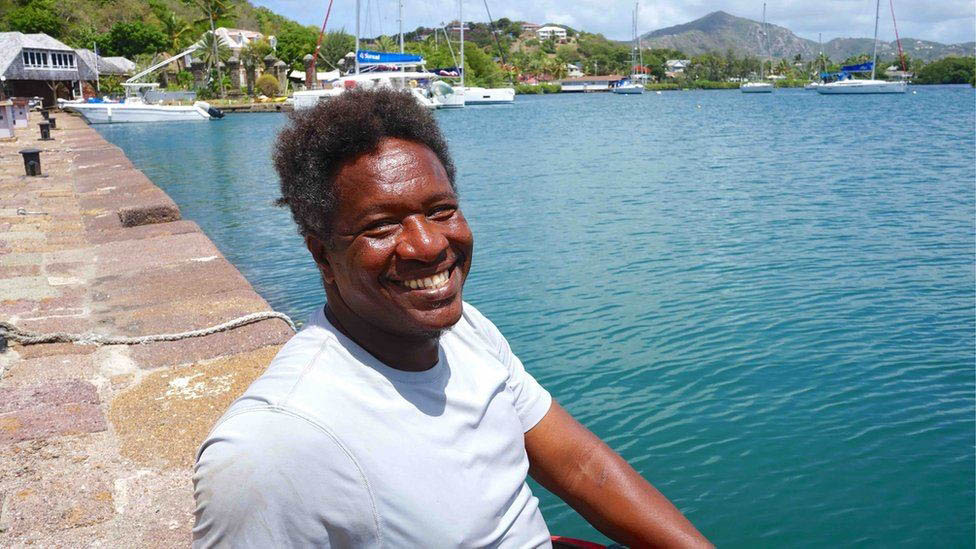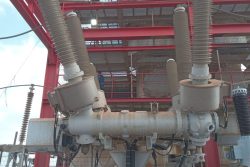(BBC) “It’s the best thing I’ve found in 31 years of diving,” says Maurice Belgrave, pointing to the spot where a centuries-old shipwreck lay hidden under the water for more than 200 years.
Here at the Antigua Naval Dockyard, historic anchors, cannons and capstans are on bountiful display, testimony to the pivotal role it played as a safe harbour for Royal Navy warships protecting Britain’s valuable sugar-producing islands.
The murky waters around it, however, conceal a wealth of secrets.
Over the years, commercial diver Mr Belgrave has found everything from 18th Century tobacco pipes to live cannon balls deep in the sediment beneath.

“Most of the real history is on the seabed,” he tells the BBC.
In 2013, a routine job cleaning an anchor chain unearthed his most impressive discovery to date: the remarkably well-preserved remains of a 250-year-old naval vessel.
“Whenever I’m down there, I run my hands through the mud,” he explains. “I saw the lumbers and realised it was the skeleton of a real big boat.”
The presence of the 40-metre (130-ft) wooden ship was finally confirmed last month by a team of visiting archaeologists.
Not only does its sheer size set it apart from other wrecks around the Caribbean island, but local historians also believe it to be the 1762 Beaumont, a French merchant ship later bought by a private individual, renamed the Lyon and used in the American Revolutionary War.
The mud which kept it concealed just feet below the surface, traversed by hundreds of yachts a year, is credited with keeping it intact, offering archaeologists a veritable time capsule to explore.
Historians had long suspected the Beaumont was there – and a hydrographic survey, also in 2013, had given weight to that – but poor visibility made it tricky to locate.
Lack of funds hindered efforts to professionally scour the identified spot until recently, when the French and Martinique governments – as well as the US-based Richard Lounsbery Foundation – paid for a visit by a group of international experts.
The timing was impeccable too, preceding celebrations for this month’s fifth anniversary of the dockyard’s award of Unesco World Heritage Site status. Dr Reginald Murphy, Antigua’s Unesco representative, says this is a “major historical find”.
“You read about the Age of Sail and the size of the ships, but it’s not until you actually see one that you realise how massive and powerful they were; it’s a way of reaching into history,” he says.
“We have many artefacts and buildings from that era but nothing compared to this. It’s a real touch of reality.”
The six-day excavation revealed the vessel’s measurements to match the dimensions of the 900-ton Beaumont.
Further research is required but if it is indeed the Beaumont, it could be the only shipwreck of its kind in the world, explains Antigua-based archaeologist Dr Christopher Waters.







